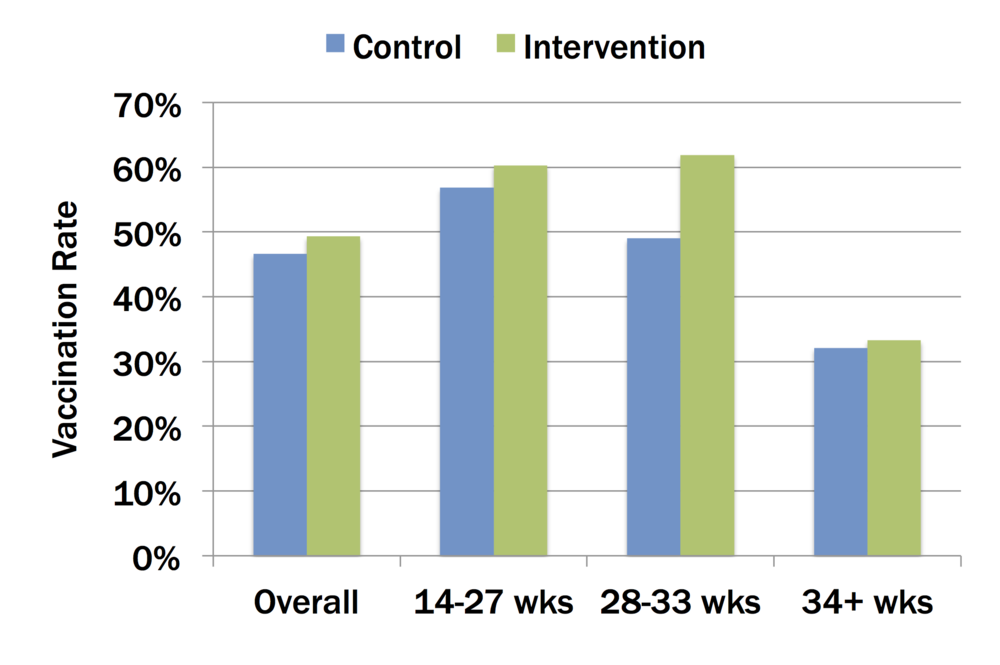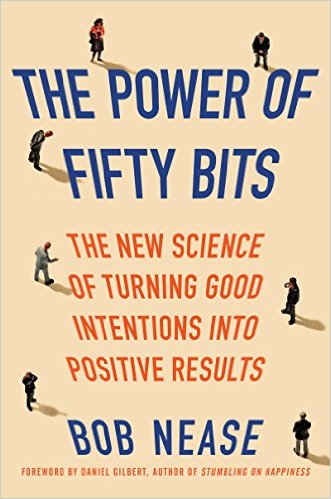Photo by Tatiana Vdb, Flickr
Flu vaccination is important for at-risk individuals, among them pregnant women. And when pregnant women are vaccinated, the benefits extend to their unborn children as well.
Despite the need, a lot of pregnant women fail to get vaccinated. So a team of researchers set out to goose vaccination rates among low-income women receiving care at five community-based clinics in New York… using text messages. (The study was reported in the American Journal of Public Health.)
The researchers randomly assigned women to either receive a series of text messages reminding the subjects to get vaccinated, or to receive usual care. Overall, the vaccination rate increased from 46.6% in the control group to 49.3% in the intervention group. (Women who were at a gestational age of 28-33 weeks saw a bigger jump, from 49% in the control group to 62% in the intervention group).
A couple of thoughts from the fifty bits design perspective, after the chart showing the results.

Text messages are a type of “getting in the flow” — one of the fifty bits design strategies. Instead of demanding attention or leveraging inertia, getting in the flow goes to where a person’s attention (i.e., fifty bits) is likely to be, and inserts a cue to action.
The “get in the flow” approach works best when inattention is the main obstacle to the desired behavior. Because getting vaccinated is something that women can’t do on their own, forgetting is only part of the problem… which may explain the small overall difference in vaccination rates.
Getting vaccinated is a lot easier if you’re reminded to ask about it when you’re being seen by someone who can vaccinate you… and this raises the question about whether the reminder is pointed at the wrong person. Would vaccination rates have gone up even more had the reminder been to the provider at the time the woman showed up for her appointment? Or perhaps at a pharmacy or even in the workplace (assuming that flu vaccinations are available there)?
The theory says it would. What do you think?



